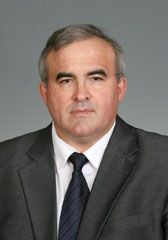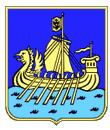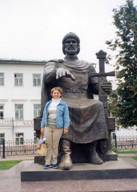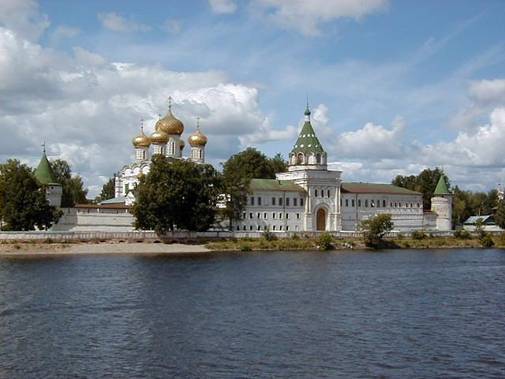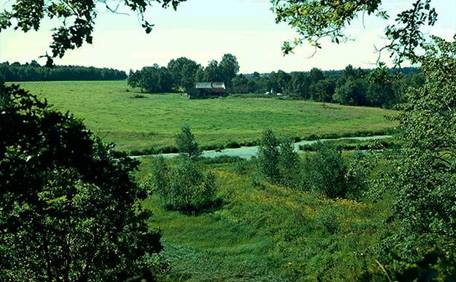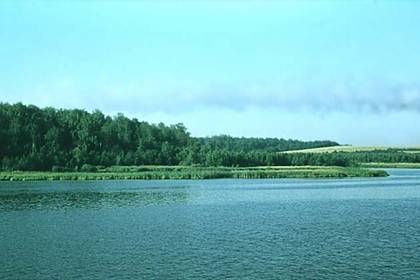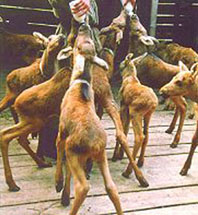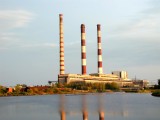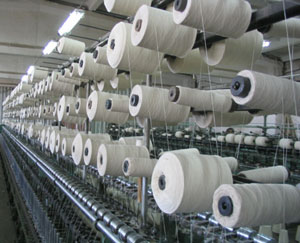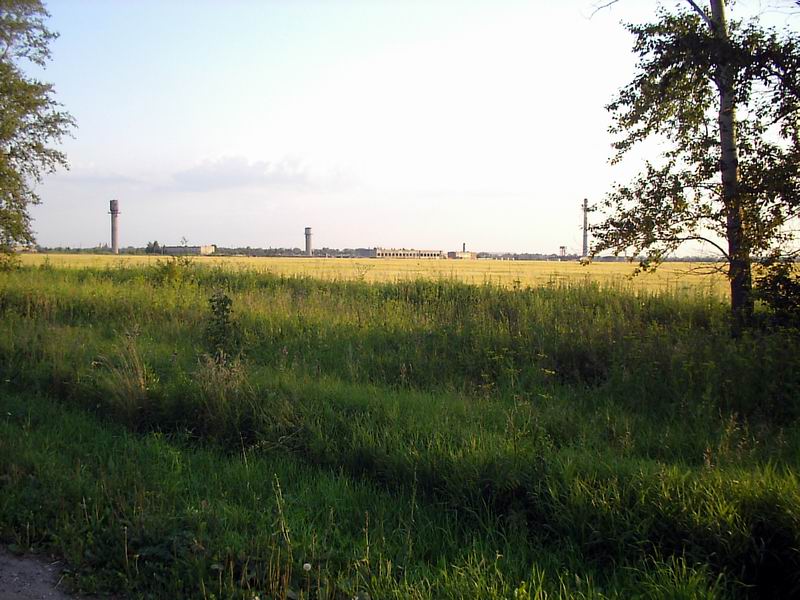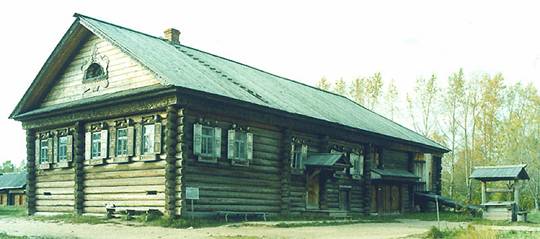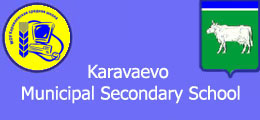

GENERAL INFORMATION:
|
|
Kostroma Region is located in the central part of the East European Plain bordering on Ivanovo, Yaroslavl, Vologda, Kirov, and Nizhny Novgorod regions. It covers an area of 60 100 sq. km (0.35% of the Russian Federation).
The Galich Uplands with elevations up to 292 m are located in the center of the region; and the Northern (Severnye) Ridges, in the northeast. The main river is the Volga and its tributaries the Kostroma, Unzha, and Vetluga rivers. There are many lakes in the region, the largest of which are Galichskoe and Chukhlomskoe.
Most of Kostroma Region has a temperate continental climate with an average January temperature of -12 C and an average July temperature of +18 C. Annual precipitation is about 600 mm. Soils are typically sod-podzolic. The vegetation consists mainly of softwood and coniferous forests.
The region was formed on August 13, 1944. It is divided into 24 administrative districts, 7 cities under regional jurisdiction, 4 cities under district jurisdiction, 3 city districts, 18 towns, and 250 rural councils. The population is 791 400 people, and the population density was 13.2 people per sq. km. The largest cities are Kostroma (288 500), Bui (28 400), Nerekhta (28 300), Sharya (26 100), Manturovo (20 900), and Galich (20 900).
|
|
Kostroma Region is part of the Central economic district. The largest industrial centers are Kostroma, Sharya, Nerekhta, Galich, Bui, Manturovo, and the old jewelry craft center of Krasnoe-on-Volga. The main industrial sectors are textiles, woodworking, engineering, and food. The Kostroma State Regional Power Plant (Kostromskaya GRES) operates in the region.
The trend towards stabilization in the economy has had a positive impact on agriculture in Kostroma Region. The number of head of cattle, pigs, sheep, and goats has increased significantly on farms of all categories compared to the previous year; and grain, legume, potato, and vegetable yields have also increased.
Six higher educational institutions, 19 secondary technical schools, and 550 regular schools operate in the region. There are 33 doctors in all specialties per 10 000 residents. The regional health care system includes 94 hospitals.
In addition to being a business, scientific, and educational center, the city of Kostroma is the center of the region's cultural life and has a well-organized system of recreational and entertainment facilities.
|
|
Many famous writers, poets, artists, and playwrights have glorified Kostroma. One of these was the Russian dramatist Aleksandr Nikolaevich Ostrovsky. The A.N. Ostrovsky museum house is located in the village of Shchelykovo.
HISTORY:
As one of Russia's oldest cities, Kostroma played a special and very important role in the formation of the Russian state.
In the late 9th century, Slavic colonists from southwestern Rus arrived in the forests of the Middle Volga, where Meryan tribes had lived since ancient times. There they founded a small settlement at the confluence of the Kostroma and Volga rivers.
|
|
Kostroma is first mentioned in the Voskresensk and Tver chronicles around 1213. The city more than once witnessed enemy invasions and internal wars. The people of Kostroma fought against the Golden Horde in the 13th and 14th centuries, and during the feudal wars over the grand-princely throne in the 15th century, Kostroma was the scene of battles between the princes of Moscow and Galich. Later on, the city was a base in the struggle against the Volga Khanate; and in the 17th century, it took part in liberating the country from the Polish-Lithuanian interventionists.
Kostroma suffered greatly under the Tatar-Mongol yoke, but although ravaged by the conquerors, it found the strength to rise again. In 1264, under the leadership of Prince Vasily Yaroslavovich, the people of Kostroma won the first Russian victory over Tatar-Mongol forces on the shores of a lake named Holy (Svyatoe) in honor of this feat.
The rich Kostroma lands attracted enterprising people from all parts of old Rus-from Kiev, Smolensk, the Vladimir-Suzdal plain, and Great (Veliky) Novgorod. Ordinary peasants fleeing from Polovtsian raids and civil wars between princes also poured into the undeveloped new lands in the 13th century. The native Finno-Ugrian tribes of Meryas and Maris welcomed the newcomers peacefully, and the local culture blended organically with Orthodoxy. Thus, a distinctive culture of Northeastern Rus arose, forming the basis of the historical core of present-day Russia.
In the mid-14th century, Kostroma was the center of the Kostroma appanage principality. Later, as part of the Muscovite state, it became one of the main commercial ports of the upper Volga and one of the links in Russia's Golden Ring.
|
|
Kostroma also had great economic significance owing to its location on the ancient Volga trade route connecting the Baltic and Western Europe with the wealthy East. Between the 16th and 18th centuries, Kostroma was a major center with well-developed textile and metalworking industries. Various trades, such as tanning, blacksmithing, silversmithing, textile arts, brickmaking, as well as architecture and painting, also expanded. Roads from the Rostov-Suzdal lands to the cities of the Upper Volga passed through Kostroma. The city's favorable geographical location promoted the development of business and trades there. Kostroma's ties with foreign countries broadened with the opening of a trade route to England via the White Sea.
In the late 18th century, Russia's best town planners worked out plans to build up Kostroma. Over a period of several decades, a trade and administrative complex of unique beauty was constructed that is still considered one of the finest in Russia. But the people of Kostroma have not only been celebrated for this or for feats of arms in past centuries. Kostroma's architects, icon- and portrait painters, writers, and artists have made an enormous contribution to Russian culture.
|
|
Today, the city administration is doing everything possible to revive spiritual and moral values and restore the splendid monuments of church architecture that beautify and will continue to beautify not only Kostroma, but all of Russia as well. After the Civil War [1918-1921], during the years of the first Five-Year Plan, Kostroma's power and transportation problems were solved by building a heating and power plant and a railway bridge across the Volga. In the 1930s, the Metalworker (Rabochy metallist) Factory started producing excavators, a new flax mill went into operation, and a textile trade school and textile institute (now a technological institute) were opened.
Words cannot convey what the people of Kostroma endured in the prewar years, but in spite of everything, they remained true to the patriotic traditions of their ancestors. During the Second World War, when the country was threatened by mortal danger, thousands of Kostroma residents took up arms and those left on the home front worked for victory. The city's factories churned out aircraft veneer, military river boats, tanks, skis, and raincoats.
|
|
Thousands of people from Kostroma took part in building defensive lines around Moscow and Leningrad and selflessly fought on the front. It was only on August 13, 1944, that Kostroma once again became a regional center. After the war ended, the workers of Kostroma restored the economy; provided the city with services and utilities; and built new factories, apartment buildings, schools, kindergartens, and movie theaters.
Throughout Russia's history, Kostroma has made its contribution to the artistic life of the people and became a vital part of Russia's cultural history. It belongs among those Russian cities in which past and present are closely intertwined and where history and modernity exist side by side and supplement each other.
RESOURCES:
Kostroma Region is located in the center of the non-black-earth zone of European Russia. It stretches 420 km west to east and 250 km from north to south.
Although the climate of Kostroma Region is considered to be temperate continental, construction of the Kostroma and Gorki reservoirs led to marked changes in the climatic conditions. In Kostromskoi and Kadysky districts on the shores of these reservoirs, the diurnal air temperature fluctuation has decreased, wind velocities have increased, and the frost-free period has lengthened by ten days to two weeks. The swampy areas of the Kostroma Lowlands are noted for high humidity and frequent fogs.
|
|
Forests are one of Kostroma Region's most important resources. They cover 72.6% of the region's area; total timber reserves are 617 million m3. Spruce, pine, birch, and aspen are the main timber species growing here. In addition, more than 1000 herbaceous and woody shrub species are found in the region, including 9 species listed in the Red Book of the Russian Federation and 14 tree species and 150 herbaceous plant species under government protection.
The region's animal life is rich and varied. Forest hunting grounds cover an area of 4.6 million hectares; aquatic and open hunting grounds occupy another 1.3 million hectares.
The productivity of these lands is still relatively high, although there is a pressing need for drastic changes. However, this problem can be solved if local government agencies work effectively to attract the needed investments to the region.
|
|
More than 40 species of fish inhabit the various water bodies of the region. Fishing reserves comprise 56 800 hectares of reservoirs, 19 900 hectares of lakes, and about 14 700 sq.km of rivers.
|
|
However, the region has achieved notable successes in recent years. The development of new economic mineral deposits, e.g., oil shale, peat, oil, and gold, has begun, and there are even thermal springs that can be used to heat entire cities. Many districts have reserves of mineral and therapeutic drinking water (a total of 12 springs). There are also plans to find practical applications for previously unused minerals, such as mineral pigments, phosphorite, table salt, mercury, and sulfur pyrites. Explored underground water resources currently amount to 220 800 m3/day. So, those who gave up their territories to Kostroma Region 50 years ago may soon regret it.
ECONOMY:
|
|
The main industrial sectors include the fuel, chemical and petrochemical, forest, woodworking (lumber, plywood, chipboard, fiberboard, and furniture), pulp and paper, food (alcoholic beverages and starch), light (linen, hemp, and jute fabrics; clothing, shoes, and knitted goods), building material, power, and engineering (excavators, machine tools, and equipment for the textile, chemical, food, and woodworking industries) industries; metalworking; and ferrous and nonferrous metallurgy.
The largest companies in Kostroma Region are the Motordetal Factory (car parts), a mechanical plant, AOOT Kostroma State Regional Power Plant, Sharya's "Khronostar", AO Big Linen Mill (Bolshaya lnyanaya manufaktura), OAO EKSKO (excavators), AOOT Plywood Mill (Fanerny kombinat), OAO Zvorykina Flax-dressing Mill (Lnokombinat), and AOOT Truck-Mounted Cranes Plant (Avtokranovy zavod).
|
|
Since forests cover nearly three-quarters of Kostroma Region (48% are coniferous forests), it is quite natural that the forest and woodworking industries should have developed here. Forest industry companies are located in 19 districts and employ 29.4% of the region's industrial workers. More than half (56.4%) of the companies are involved in logging activities; the remaining companies are involved in producing finished products, but there are clearly not enough of them. Villages and small towns have been built to house company workers and their families.
However, the forest industry is in a crisis as a result of the current political and economic situation. Privatization, which has led to a breakdown of the unified investment policy, has also had a negative impact on the industry.
|
|
The jewelry trade began developing in Kostroma in the 19th century. Engraving, silver niello [silver with black engraving], and ornaments with colored glass and enamel insets are some examples of the art. The largest center of the jewelry industry is the village of Krasnoe-on-Volga.
Kostroma was Russia's main light-industry center by the end of the 18th century, and even today, it is one of the largest textile-industry centers, employing 14% of all industrial workers. The linen industry is the region's most developed light industry sector.
|
|
Kostroma exports 10% of its total production abroad.
Agriculture is one of Kostroma Region's most important sectors. Rye, wheat, barley, and oats are grown here, and beekeeping and plant cultivation are expanding. Traditional flax cultivation and processing is reviving. However, agriculture in the region is mainly oriented towards livestock farming, e.g., beef and dairy cattle, pigs, sheep, and poultry. Agricultural land occupies 940 000 hectares in the region, including 26 400 hectares allotted to individual farms and 551 000 hectares of cropland. Most of the cropland (90%) is on highly acidic, nutrient-poor sod-podzolic soils. Slightly more than half of the cropland (55.8%) is sown with feed crops, 38% with grain, 1.4% with industrial crops, and 4.8% with potatoes and other vegetables.
|
|
AUTHORITIES:
|
|
CULTURE AND ART:
Kostroma is rightly called a treasure house of Russian culture. The names of great cultural, scientific, and artistic figures such as poet N.A. Nekrasov, dramatist A.N. Ostrovsky, artist B.M. Kustodiev, and merchant P.M. Tretyakov [founder of the famous Tretyakov Gallery in Moscow] are connected with the city.
Kostroma has preserved many works of great Russian sculptors. One of the monuments of the old city are the market arcades built in the main square many centuries ago. Another attraction and ornament of the city is the fire tower built by the architect Fursov.
|
|
There is Trinity (Troitsky) Cathedral at the Ipatyevsky (St. Ipaty) Monastery, and beside it is the Museum of Russian Wooden Architecture. Troitsky Cathedral amazes visitors with its loftiness and beauty. The walls and vaulting of the main part of the church, altars, and cupolas are richly decorated with paintings by artists of the time. The cathedral also has a unique work of decorative carving: a royal chapel that was a gift of Mikhail Romanov. The cathedral's greatest possessions are a large number of icons and splendid works made of wood, bone, and stone by Old Russian craftsmen.
|
|
The doors are always open at the Museum of Fine Arts in Kostroma, which occupies the premises of the former Romanov Museum. The museum has a large collection of paintings by great past and contemporary artists.
The Old Provincial Theater, which was founded in 1808 and is now called the Ostrovsky Drama Theater, also operates in Kostroma.
There are The Kostroma Historical and Architectural Museum, the Museum of Russian Wooden Architecture, the Art museums situate in Kostroma.
|
|
The regional archives, science library, department of education, bishopric (eparchy), TV and radio broadcasting company, and city, district, and regional administrations all assist the foundation in its work.
| Karavaevo School | Native Karavaevo |
Source: http://www.commersant.com
